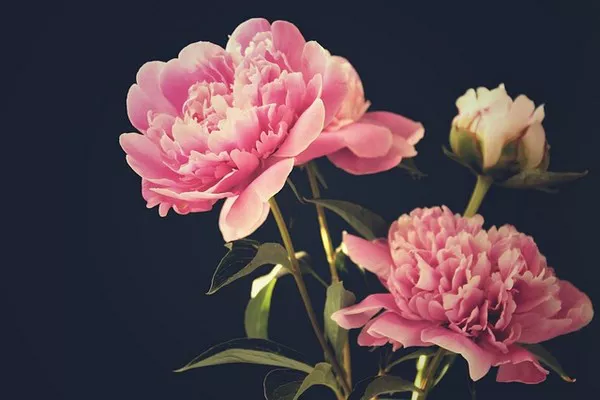Floral enthusiasts and garden aficionados often find themselves captivated by the delicate beauty of peony flowers. With their lush, layered petals and enchanting fragrance, peonies are a favorite among those who appreciate the ephemeral wonders of nature. Preserving these botanical masterpieces through the art of pressing allows individuals to extend their enjoyment and create timeless keepsakes. In this comprehensive guide, we will explore the intricate process of pressing peony flowers, ensuring that their grace and charm endure for years to come.
Understanding the Art of Pressing
Before delving into the specific steps of pressing peonies, it’s crucial to grasp the fundamentals of the pressing process. Pressing flowers is a centuries-old technique employed to capture the essence of blossoms in a flattened, preserved state. This method not only serves as a means of artistic expression but also as a way to memorialize the fleeting beauty of flowers, including the beloved peony.
Selecting the Right Peony Blooms
Achieving a successfully pressed peony begins with the careful selection of blooms. Opt for peonies that are in full bloom but not overly mature. The flowers should be free of blemishes, discolorations, or signs of wilting. Choose specimens with vibrant hues and healthy petals, as these characteristics contribute to a more visually appealing pressed result.
Materials Needed for Pressing Peonies
Gathering the appropriate materials is crucial to ensure a successful pressing process. Before embarking on this floral endeavor, prepare the following items:
1. Fresh Peony Flowers:
Select a variety of peonies in peak condition, preferably in the morning when they are at their freshest.
2. Absorbent Paper:
High-quality, absorbent paper, such as blotting paper or parchment paper, is essential for extracting moisture from the flowers.
3. Heavy Books or Flower Press:
Provide a flat surface for pressing by using heavy books or investing in a flower press designed specifically for this purpose.
4. Cardboard or Cardstock:
Use sturdy cardboard or cardstock to create protective layers between flowers and paper, preventing potential bleed-through of pigments.
5. Microfiber Cloth:
A gentle microfiber cloth is handy for handling delicate petals without causing damage.
6. Tweezers or Small Brushes:
Precision tools like tweezers or small brushes aid in the careful manipulation of petals during the pressing process.
7. A Cool, Dry Location:
Choose a location with consistent temperature and low humidity to facilitate the drying process.
Step-by-Step Guide to Pressing Peony Flowers
Now that the materials are assembled, let’s delve into the step-by-step process of pressing peonies. Following these meticulous steps will help preserve the natural beauty of the flowers.
Step 1: Harvesting Peonies
Timing is Crucial: Harvest peonies in the morning when their moisture content is lower, ensuring a faster and more effective drying process.
Selecting Ideal Blooms: Choose peonies with well-formed buds and petals at their peak, avoiding any signs of damage or disease.
Using Clean, Sharp Scissors: Cut the peony stems at an angle using clean, sharp scissors, allowing for better water absorption and prolonged freshness.
Step 2: Preparing the Flowers for Pressing
Removing Excess Moisture: Gently shake the flowers to remove any excess moisture, preventing mold growth during the pressing process.
Flattening the Blooms: Lay the peony flowers flat on a clean, dry surface, ensuring that the petals are spread out naturally.
Step 3: Constructing the Pressing Layers
Absorbent Paper Placement: Place a sheet of absorbent paper on the bottom of the flower press or between the pages of heavy books.
Layering Flowers and Paper: Arrange the peony flowers on the absorbent paper, leaving sufficient space between each bloom. Place additional sheets of absorbent paper between the layers of flowers.
Adding Cardboard Protection: Insert cardboard or cardstock between each layer to prevent pigment transfer and maintain the integrity of each pressed bloom.
Step 4: Pressing the Peonies
Applying Even Pressure: Close the flower press or stack heavy books on top of the layered flowers. Ensure even pressure to promote uniform pressing.
Patience is a Virtue: Allow the peonies to press for 2-4 weeks, periodically checking for dryness and replacing damp paper as needed.
Step 5: Unveiling the Pressed Peonies
Careful Removal: Gently remove the pressed peonies from the flower press or book, using tweezers or a small brush to handle delicate petals.
Inspecting the Results: Assess the pressed peonies for any imperfections, discolorations, or uneven drying. Make adjustments as necessary for optimal results.
Preserving the Beauty Beyond the Pressing Process
Beyond the pressing process, it’s essential to store pressed peonies properly to maintain their longevity and visual appeal.
Storage Tips:
1. Cool, Dark Environment:
Store pressed peonies in a cool, dark place to prevent fading due to exposure to light.
2. Framing or Displaying:
Consider framing pressed peonies or incorporating them into decorative displays to showcase their timeless beauty.
3. Avoiding Moisture:
Protect pressed peonies from humidity and moisture, as these elements can lead to mold growth and deterioration.
Conclusion
Pressing peony flowers is a delicate and rewarding process that allows individuals to capture and cherish the ephemeral beauty of these exquisite blooms. By following the meticulous steps outlined in this comprehensive guide, enthusiasts can create enduring keepsakes that serve as a testament to the timeless elegance of peonies. Whether framed as art or carefully stored as cherished mementos, pressed peonies offer a glimpse into the captivating world of botanical preservation, where nature’s beauty meets the artistry of preservation.


